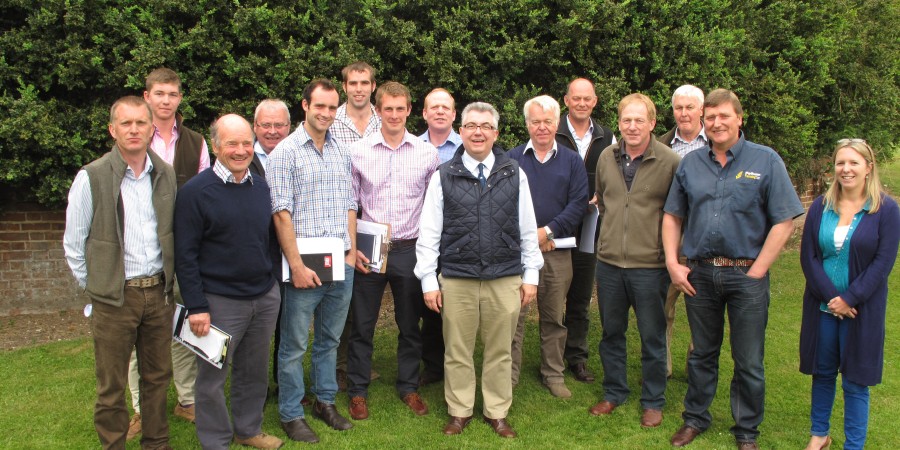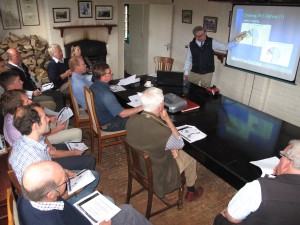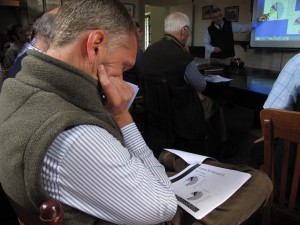For some there is devil in the detail. However for members of the Joint Venture Farming Group there can be delight in the data meticulously recorded of their labour and machinery costs. There was certainly an air of expectation when JVFG members gathered to hear consultant Jamie Gwatkin deliver his analysis of each farm business’s cost of crop establishment in autumn 2014.
Shifts in cropping patterns
Interesting overall trends emerged: the area down to beans is up significantly as is spring barley while oilseed rape acreage has dropped.
Several of the businesses have added more acreage to their businesses, hoping to put put more land through the same machinery. Everyone seemed to be putting even more thought into how to minimise field operation: significant reduction in secondary cultivations, more direct drilling and, on particular soil types, ‘letting the weather do the work’ and not worrying about getting the machinery in to make it ‘look tidy’.
Getting on down
The reduction in the cost of fuel together with favourable weather conditions, certainly better than the previous two years, have had a welcome effect.
Even so, across the group members have made steady progress in their own cost-cutting ambitions. The average is down from £130/hectare to £80/hectare. To this good news Jamie Gwatkin added a note of caution.”Some depreciation costs, especially of the crawlers in the spring and summer will be loaded back onto the autumn figures if they are not used much again.”
Drilling down to the costs of different kit
Each machinery manufacturer, at events such as Cereals, will punch home what they say are the superlative qualities of their kit. “JVFG results are one of the few sources for a farmer to get comparative costs of different drills and combinations”, says Jamie Gwatkin, “and on soil types equivalent to their own.”
The highest output of all drills was achieved by Pelham Farming Company at 5.23 hectares/hour. “We do have a madman in the seat”, admitted company director Edward Hitchcock, “He achieves up to 23 km/hr and did 1000 hectares in the autumn and was all done by 5th October”. But the added admission of the advantage of in-cab screen to give a heads up on blockages and the nature of the ground all helped to achieve this level of performance.
Overall leader in costs was JV Farming. Tim Merry was justifiably pleased with his £10.48/hectare figure for labour, machinery and implement cost of establishment compared to the £19.89/hectare for the group average. “Our drill is a 2009 machine and it’s brilliant”, he told the group, “the seed distribution and depth is spot on.
The other factor I think helps is that we keep it going by having someone else running around supplying the operator with seed. You only need a drill travelling to the yard for an hour to fill up for an hour to lose efficiency.”
To buy or not to buy
“The question I get a lot from farmers just now”, said Jamie Gwatkin in his end of meeting summary, “is ‘Do I buy or re-furb?’. The answer I usually give is this: if it’s good and it works then refurb it.” Moreover he added that there are still logistical things to get right. “It’s making the most of your equipment that is still key. Getting more out of your machine; using GPS not markers and cutting downtime or shuttle time by having a student with seed in field ready to fill the drill up to keep it performing for you. Last of all it’s attention to detail that continues to matter. And with that Jamie Gwatkin detailed JVFG members to deliver the next set of data for him to delve into.
If you want to know more about how JVFG works and for deeper insight into the benchmarking the group gains from contact JVFG Chairman Antony Pearce.




